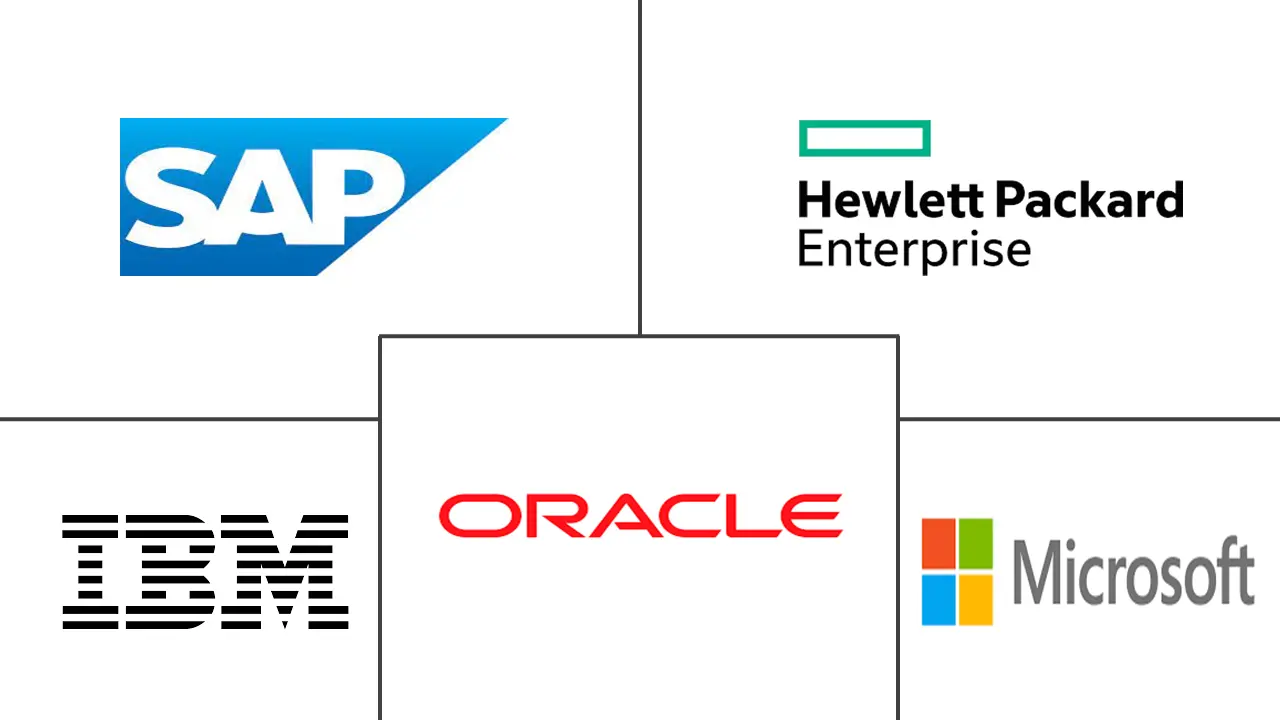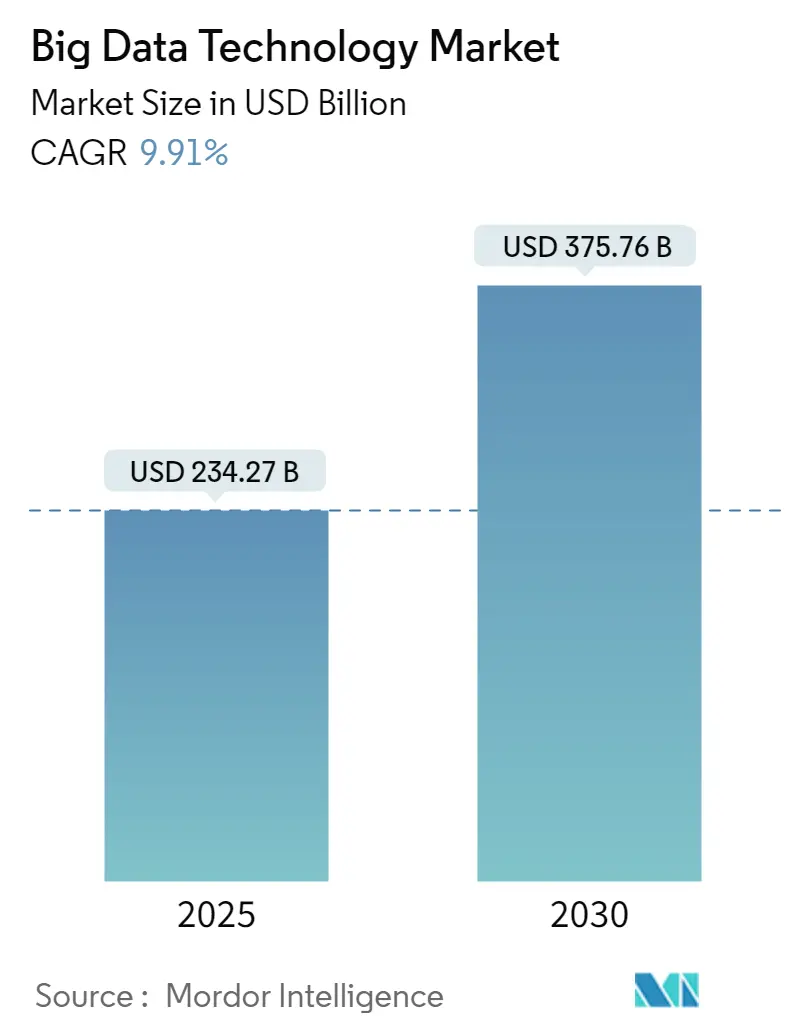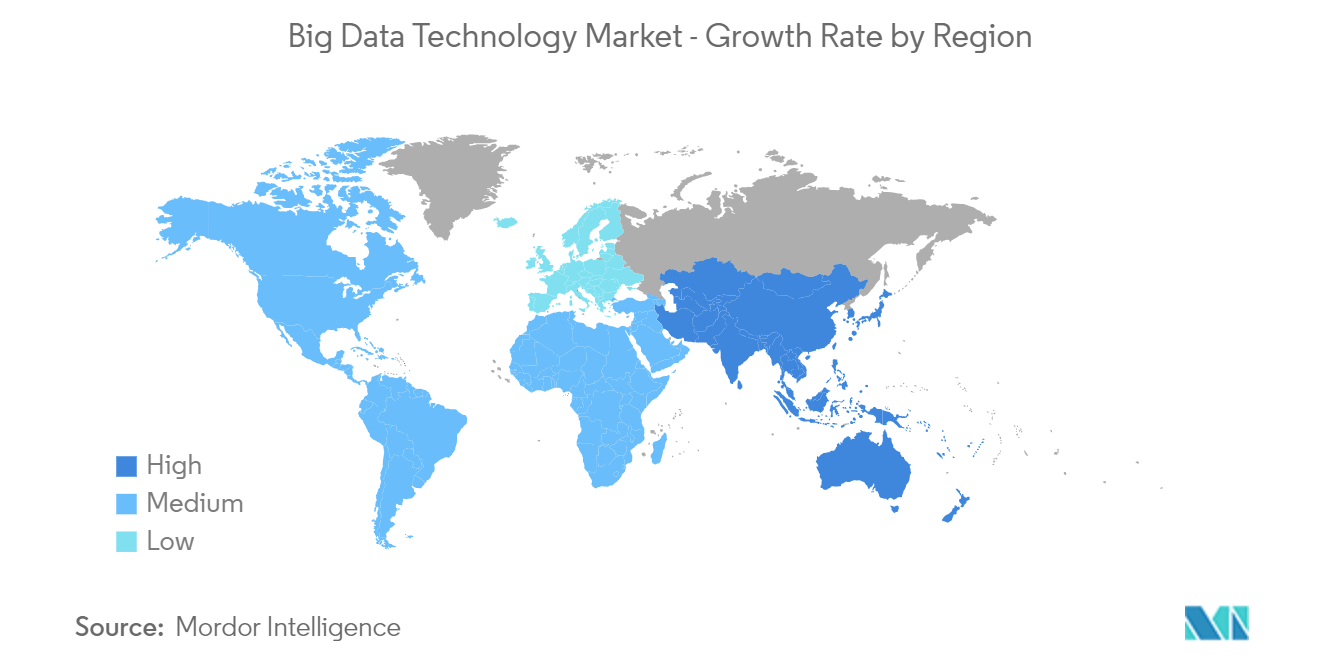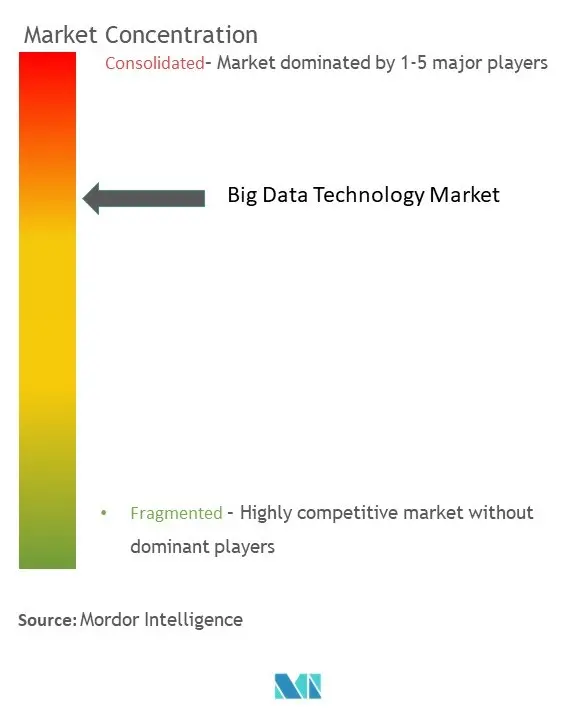Big Data Technology Market Analysis
The Big Data Technology Market size is estimated at USD 234.27 billion in 2025, and is expected to reach USD 375.76 billion by 2030, at a CAGR of 9.91% during the forecast period (2025-2030).
- Big data technology is defined as software utility. This technology is primarily designed to analyze, process, and extract information from a large data set and a huge set of extremely complex structures.
- The amount of data produced is rising quickly yearly due to improvements in new technology, gadgets, and communication. The market for big data technologies and services is primarily driven by the demand for actionable insights that can be used for future decision-making processes by evaluating the constantly growing amounts of structured and unstructured data.
- The automobile sector is positioning itself to be industry 4.0-ready with the rise of industrial IoT and M2M connectivity. Robots, sensors, barcode readers, and RFIDs are now commonplace in this sector's factory floor. Data generation points have drastically risen as a result of these gadgets.
- Supply and demand factors play a significant role in the consumer electronics business. This industry sector has significantly benefited from big data analytics, allowing it to convert from a push market strategy to a pull market strategy.
- Furthermore, the enormous amount of data produced and stored makes it vulnerable to hacking and modification by outside parties or insiders. This will jeopardize the safety of any saved data. The vendors of big data technology, whose reputation would be in danger, will be immediately impacted.
Big Data Technology Market Trends
Retail Industry to Dominate the Market
- With Big Data technologies and sophisticated analytics, the retail sector is undergoing a significant revolution. Retailers are using Big Data analytics to stay competitive due to the growth of e-commerce, online purchasing, and high levels of rivalry.
- Big Data is used throughout the whole retail process in the business to study customer behavior, forecast demand, and improve prices. Most big data applications in retail today are for system-wide cost reduction, enhancing the customer experience both online and in-store, data-driven adaptive supply chains, and real-time analytics and targeting.
- With the use of big data analytics, the industry is now more aware of consumer behavior patterns and can plan production based on these. Using big data from the public internet as user-generated content (UGC) or online customer reviews (OCR) data presents an up-and-coming alternative for analyzing retail customer behavior.
- In January 2022, J.D. Power, a global provider of data analytics and consumer intelligence, relaunched three major automotive data products maintained by the company’s Autodata Solutions division. These include solutions for vehicle identification number (VIN) descriptions, inventory management, and payment and incentives data for digital retail and desking applications.
- Retailers may store, integrate, and analyze a wide range of online and offline customer data, e-commerce transactions, clickstream data, email, social media, and call center records using a big data platform provided by vendors like MapR Technologies.
Asia-Pacific to Witness the Highest Growth
- Asia-Pacific is seeing a boom in data produced from digital goods and services due to population expansion and increased e-commerce. While big data has been widely used by Asian-Pacific international banks (APAC), more local institutions are increasingly doing the same to achieve a "second-mover advantage."
- Due to increased Internet usage, organizations can access a vast amount of structured and unstructured data. Due to these advantages, substantial multinational corporations now have their big data evaluated for practical knowledge.
- End users are also embracing big data analytics outsourcing service models. Data analytics outsourcing is a business strategy where a data-driven organization entrusts a service provider with its data in exchange for access to insightful reporting. The provider handles infrastructure setup and maintenance, data management, and data analysis. The need for immediate insights is driving the need for significant data analytics outsourcing because managing the data generated by enterprises takes time.
- More physical servers must be added to the cluster to accommodate the growing data, which takes time and money. A cloud platform's complete scalability gives businesses access to limitless storage capacity on demand. As a result of its advantages, the technology is expanding in areas where it is being used.
- Moreover, In February 2023, Guizhou Province, a major big data hub in southwest China, announced its plan to invest 20 billion yuan (USD 2.9 billion) in big data-related initiatives in 2023. The director of the province announced that the province will accelerate the construction of 5G, computing networks, data centers, and other forms of advanced digital infrastructure. Such developments are expected to boost the growth of big data technology in the region.
Big Data Technology Industry Overview
The market is concentrated, with significant legacy players dominating the market, like IBM, Microsoft, and SAP. Since companies are concerned about the privacy and management of their employee/customer data, they trust established vendors more than new entrants.
- December 2022 - Hewlett-Packard Company has announced new application, analytics, and developer services for HPE GreenLake. With edge-to-cloud technology, businesses can implement a modernization plan that puts data first for production workloads across hybrid cloud environments. Through Amazon Elastic Kubernetes Service (Amazon EKS) Anywhere from Amazon Web Services (AWS), infrastructure-as-code, and cloud-native toolchains, HPE GreenLake for Private Cloud Enterprise offers expanded container deployment options for Kubernetes to support customers' DevOps and continuous integration and continuous deployment (CI/CD) environments.
- September 2022 - The SAS Viya analytics platform is now pay-as-you-go on the Microsoft Azure Marketplace. Customers from all over the world have access to vital data exploration, machine learning, and model deployment analytics thanks to full-featured SAS Viya on Microsoft Azure. It features a rich in-app learning center to help both quick onboarding and long-term success, and it is available in many translated languages.
Big Data Technology Market Leaders
-
IBM Corporation
-
Microsoft Corporation
-
Oracle Corporation
-
SAP SE
-
Hewlett-Packard Company
- *Disclaimer: Major Players sorted in no particular order
Big Data Technology Market News
- March 2023: Hewlett-Packard Company has announced a collaboration deal to acquire OpsRamp, an IT operations management (ITOM) company that observes, monitors, automates, and manages IT infrastructure, cloud resources, workloads, and applications for hybrid and multi-cloud surroundings, integrating OpsRamp’s hybrid digital operations management solution with the HPE GreenLake edge-to-cloud platform and helping it with HPE services will lower the operational complexity of multi-cloud IT environments that are in the public cloud, on-premises, and colocations.
- March 2023: Oracle has announced an extended collaboration with NVIDIA to include running strategic NVIDIA AI applications on the new Oracle cloud infrastructure Supercluster. NVIDIA has selected OCI as the first hyper-scale cloud provider to offer NVIDIA DGX Cloud, an AI supercomputing service, at a massive scale. In addition, NVIDIA is running NVIDIA AI Foundations, its new generative AI cloud services, which are available through DGX Cloud on OCI.
Big Data Technology Industry Segmentation
Big data is a term used to describe a huge and continuously growing collection of data. It refers to the enormous amount of data that is challenging to shop, examine, and convert using traditional management techniques. The term "big data technology" refers to the software that is employed and includes data mining, data storage, data sharing, and data visualization. This all-encompassing term encompasses data, data framework, and tools and techniques for analyzing and transforming data.
The Big Data Technology and Service Market can be segmented by delivery mode (on-premises, cloud), by end-user vertical (telecom & IT, energy & power, BFSI, retail, manufacturing, aerospace & defense, engineering & construction, healthcare & pharmaceuticals), and by Geography ((North America [United States, Canada], Europe [Germany, United Kingdom, France, Rest of Europe], Asia Pacific [China, Japan, India, South Korea, Rest of Asia Pacific], Latin America, Middle East & Africa). The report offers market forecasts and size in value (USD) for all the above segments.
| By Delivery Mode | On-Premise | ||
| Cloud | |||
| By End-user Vertical | Telecom & IT | ||
| Energy & Power | |||
| BFSI | |||
| Retail | |||
| Manufacturing | |||
| Aerospace & Defense | |||
| Engineering & Construction | |||
| Healthcare & Pharmaceuticals | |||
| Other End -user Verticals (Transportation & Logistics, Media & Entertainment) | |||
| By Geography*** | North America | United States | |
| Canada | |||
| Europe | United Kingdom | ||
| Germany | |||
| France | |||
| Asia | China | ||
| Japan | |||
| India | |||
| South Korea | |||
| Australia and New Zealand | |||
| Latin America | |||
| Middle East and Africa | |||
Big Data Technology Market Research FAQs
How big is the Big Data Technology Market?
The Big Data Technology Market size is expected to reach USD 234.27 billion in 2025 and grow at a CAGR of 9.91% to reach USD 375.76 billion by 2030.
What is the current Big Data Technology Market size?
In 2025, the Big Data Technology Market size is expected to reach USD 234.27 billion.
Who are the key players in Big Data Technology Market?
IBM Corporation, Microsoft Corporation, Oracle Corporation, SAP SE and Hewlett-Packard Company are the major companies operating in the Big Data Technology Market.
Which is the fastest growing region in Big Data Technology Market?
Asia Pacific is estimated to grow at the highest CAGR over the forecast period (2025-2030).
Which region has the biggest share in Big Data Technology Market?
In 2025, the North America accounts for the largest market share in Big Data Technology Market.
What years does this Big Data Technology Market cover, and what was the market size in 2024?
In 2024, the Big Data Technology Market size was estimated at USD 211.05 billion. The report covers the Big Data Technology Market historical market size for years: 2019, 2020, 2021, 2022, 2023 and 2024. The report also forecasts the Big Data Technology Market size for years: 2025, 2026, 2027, 2028, 2029 and 2030.
Our Best Selling Reports
Big Data Technology Industry Report
Statistics for the 2025 Big Data Technology market share, size and revenue growth rate, created by Mordor Intelligence™ Industry Reports. Big Data Technology analysis includes a market forecast outlook for 2025 to 2030 and historical overview. Get a sample of this industry analysis as a free report PDF download.







